How many countries have Spanish as their official language? There are 21 Spanish speaking countries in the world.
Puerto Rico, which is however an unincorporated territory of the United States and not really a country, also has Spanish as an official language.
There are 21 Spanish speaking countries in the world:
- 19 countries in America (including Puerto Rico),
- one in Africa (Equatorial Guinea),
- and one in Europe (Spain)
Map of Spanish Speaking Countries

Spanish Language Countries
UN Nations Countries with Spanish as an Official Language:
Below is a list of the “Spanish countries” in the world. These are countries, which have Spanish as their official language (in order of Spanish-speaking population):
1. México

Native Spanish speakers: 124.85 million
With a population of more than 130 million, Mexican Spanish is considered the de facto official language.
Located in North America with the U.S. to the north and bordering Guatemala and Belize to the south, Mexico emerged as one of the Spanish-speaking countries after the Conquistadors from Spain integrated the language during the 16th Century.
Today, the country enjoys 124.85 million native speakers, and its influence extends into the Southwestern U.S. region. Although drug cartels continue to prove problematic for law enforcement, Mexico ranks 15th on the peaceful countries index.
2. Colombia
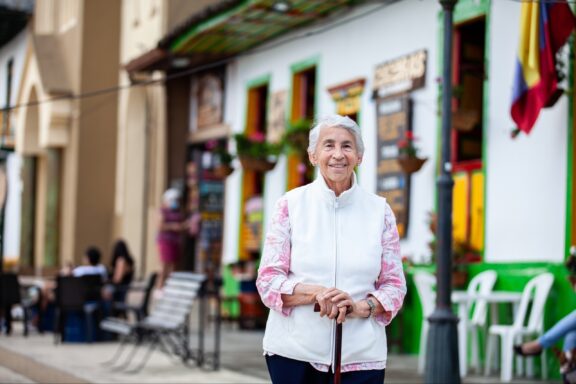
Native Spanish speakers: 50.64 million
With a population of more than 50 million people, Colombia is one of many Spanish speaking countries in South America.
A variety of Spanish dialects are employed, totaling 50.64 million native speakers.
Other official languages include English, Portuguese, and more than 70 regional and indigenous ones that include Chibchan, Tucanoan, Bora–Witoto, Guajiboan, Arawakan, Cariban, Barbacoan, and Saliban, among others. Colombia is located in northern South America with coastlines along the Pacific Ocean and the Caribbean Sea. Its abutting Spanish speaking countries include Venezuela, Ecuador, Peru, Guyana, and Panama. The country’s crime rate has steadily declined since 2002 to a near 30-year fall below that of nearby Mexico and Venezuela.
3. Argentina

Native Spanish speakers: 44.94 million
Located on the Atlantic Ocean coast of South America, Argentina borders Chile to its west, as well as Paraguay, Bolivia, and Uruguay to the north. With a population of more than 45 million, people speak a variety of dialects. 44.94 million are native Spanish speakers in Argentina.
The Rioplatense Castilian form of Spanish is largely spoken around the greater Río de la Plata Basin of Argentina and Uruguay, as well as cities such as Buenos Aires, Rosario, Santa Fe, La Plata, Mar del Plata, and Bahía Blanca.
Rioplatense is also widely used in Spanish speaking countries such as Bolivia and Paraguay. Argentina enjoys a ranking of the third most peaceful country in South America and 68th in the world.
4. Spain

Native Spanish speakers: 43.64 million
Of Spain’s population of more than 47 million people, 43.64 million are considered native Spaniards.
The type of Spanish spoken in this European nation is commonly referred to as “Peninsular Spanish,” “Spanish of Spain,” “European Spanish” or “Iberian Spanish.”
Although Spanish remains the official language, wide-reaching dialects are employed that differ considerably from those spoken in Mexico, the U.S., South America, and the Canary Islands, among others. These seemingly small differences include Andalusian Spanish, Castilian Spanish, Castrapo, Castúo, Catalan Spanish, and Murcian Spanish.
In Spain, the term Castilian Spanish is also used to describe formal varieties of the language.
Bordering France, Portugal, and the Atlantic Ocean, Spain ranks as the 36th on the peace index and tourists come from around the world to attend the Running of the Bulls highlighted in the Ernest Hemingway novel, “The Sun Also Rises.”
5. Venezuela

Native Spanish speakers: 32.1 million
Located on the Atlantic Ocean and the Caribbean Sea off South America, Venezuela possesses a population of upwards of 29 million people. Immersed in a region of Spanish speaking countries such as neighboring Ecuador, Venezuelan Spanish was introduced by Colonists primarily from Galicia, Basque Country, Andalusia, and the Canary Islands, among others.
Italian and Portuguese immigrants influenced the countries brand of Spanish during the 19th and 20th centuries.
More than 32 million people speak Venezuelan Spanish, although wide-reaching words have been adopted from indigenous languages. The crime rate in Venezuela ranks among the worst among the region’s Spanish speaking countries such as Mexico, Brazil, and Guyana, among others. Only Jamaica ranked higher in recent years.
6. Perú

Native Spanish speakers: 28.71 million
Positioned in South America among Spanish-speaking countries such as Bolivia, Chile, and Ecuador, Peruvian Ribereño Spanish (Peruvian Coastal Spanish) ranks as the official form of the language.
Unlike some other “Spanish countries”, Peru also recognizes Quechua, Aymara, and other Indigenous languages as “co-official.”
It’s also not uncommon for people to speak English, French, Portuguese, and Plautdietsch, within the population of more than 32 million.
Inland dialects are typically influenced by indigenous Andean languages that predate the Spanish Empire establishing Lima as its primary city in South America.
Peru enjoys a crime rate rated lower than Mexico, Costa Rica, and Grenada. Tourists are drawn to its sweeping landscapes.
7. Chile
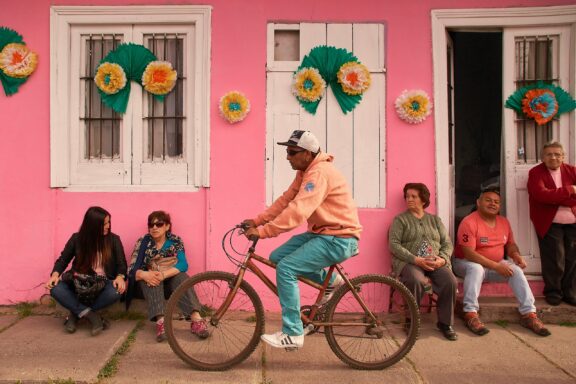
Native Spanish speakers: 18.87 million
With a population of more than 18 million, Spanish is considered the de facto official language of Chile. Located on the Pacific Ocean coast of South America, Chile neighbors Spanish speaking countries that include Peru, Bolivia, and Argentina.
Chilean Spanish dialects possess unique words, and its 18.87 million native speakers often possess unique regional accents. Perhaps the most notable is the Chilean Spanish dialect spoken on Easter Island, where residents speak with an accent influenced by the Rapa Nui language.
Chile ranks as the 38th most peaceful country and enjoys a high quality of life among Latin American nations.
8. Ecuador
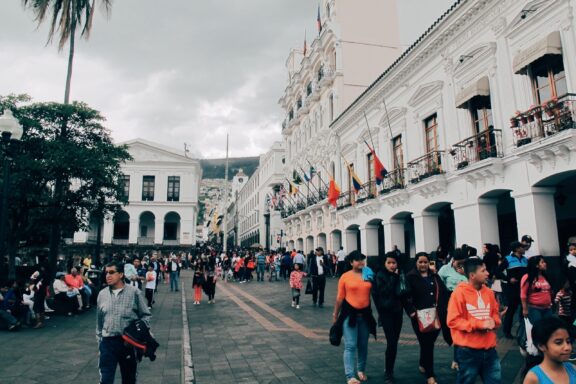
Native Spanish speakers: 15.48 million
Located on the Pacific Ocean coast of South America, Ecuador borders Spanish speaking countries such as Colombia and Peru. Among the more than 17 million residents, three dialects are largely spoken — Equatorial Pacific Spanish, Andean Spanish, and Amazonic Spanish. Differences between dialects often run along socio-economic and regional lines.
In the Andes, a unique variant is generally spoken often mistaken for the Chilango Spanish spoken in Mexico City. The Andes highland dialects evolved from wide-reaching languages and Spanish variations. Considered an affordable and family-friendly place to live, Ecuador’s crime rate has significantly declined over the last 10 years.
9. Guatemala

Native Spanish speakers: 13.4 million
With coastlines on the Pacific Ocean and the Caribbean Sea, Guatemala enjoys a population of more than 17 million.
Guatemala is located between Spanish speaking countries that include Mexico and Honduras on the Central American peninsula, nearly 14 million residents speak a national Spanish language variant.
In Spanish speaking countries such as Guatemala and El Salvador, indefinite articles are routinely placed ahead of a possessive pronoun that results in literal English translations such as “a my cup of coffee.” This facet is considered an Old Spanish construction still prevalent in Judaeo-Spanish dialects.
Guatemala has the largest economy in Central America, with a GDP that exceeds $77 billion, a moderate safety rating, and a relatively low cost of living.
11. Cuba
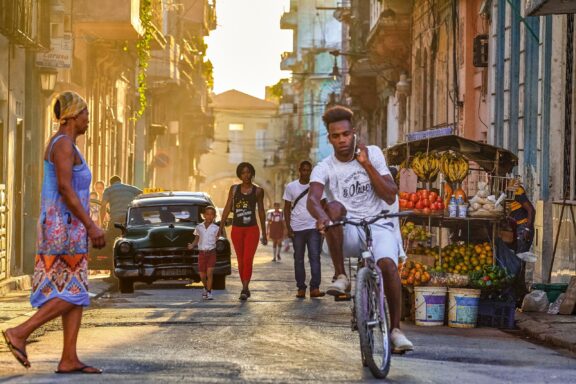
Native Spanish speakers: 11.29 million
The communist island nation in the Caribbean Sea has a population of more than 11 million, with natives speaking an official Cuban variation of Spanish. The Cuban dialect on the eastern side of the island has similarities with the language in other Caribbean countries, such as the Dominican Republic.
It’s essential to understand that Cuba is comprised of the main island as well as Isla de la Juventud and several minor archipelagos.
Ranked as the second-most densely populated island in the region after Haiti, Cubans enjoy a relatively good health index, high levels of safety, and community members are well-known for showing respect to others.
11. Dominican Republic

Native Spanish speakers: 10.28 million
With a population of more than 10 million people, the Dominican Republic is located in the Caribbean Sea between Puerto Rico to the East and it borders Haiti.
Among the Antilles group of archipelagos, Dominican Republic possesses the second-highest population and Spanish remains the official language.
The island nation’s Spanish dialect has become associated with the Dominican Diaspora that spread to areas of the U.S. including New York City, Rhode Island, Connecticut, Florida, and New Jersey, among others. Recognized by a signature accent, many former Dominicans have migrated to Puerto Rico.
Considered a favorite vacation destination, the Dominican Republic is considered family-friendly and a good place for outdoor adventure.
12. Bolivia
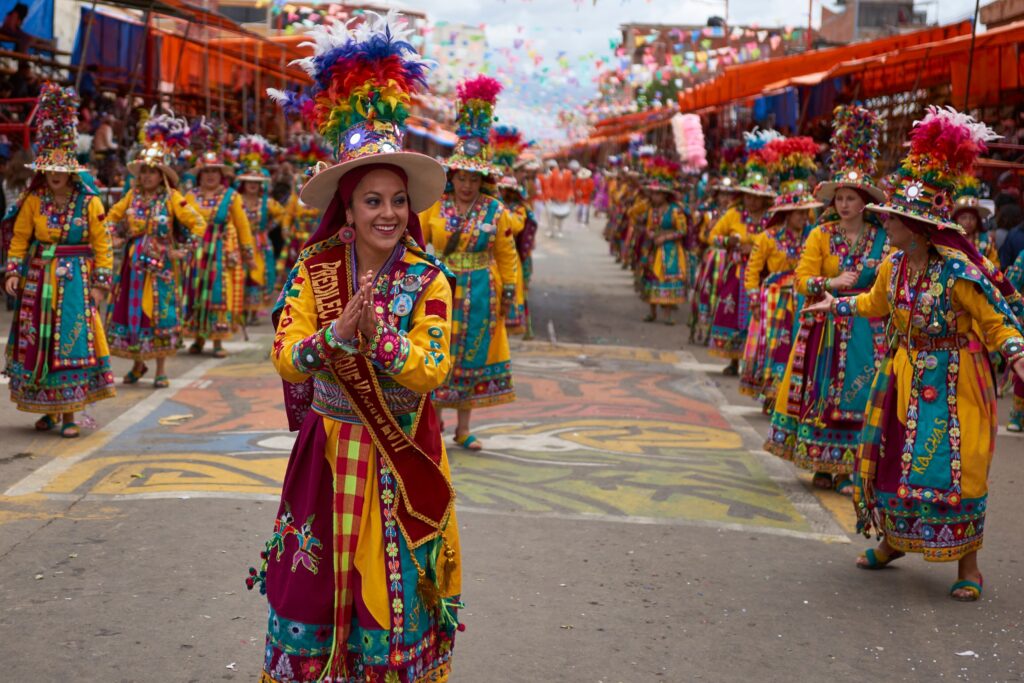
Native Spanish speakers: 9.79 million
This landlocked South American nation of more than 11 million people borders Chile, Paraguay, Peru, and Argentina. The vast majority of people speak Spanish (Castilian) as their native or second language.
Other official languages include Quechua, Aymara, Guarani, as well as more than 30 indigenous ones. Brazilian Portuguese, English, and the German Plautdietsch dialect are also recognized as a secondary language.
Regional Spanish dialects include Chapaco, Valluno, and Tuteo, which have similarities with those in Spanish speaking countries such as Argentina, Chile, Peru, and Paraguay. Bolivia enjoys a low cost of living index and crime has significantly declined during the last decade.
13. Honduras

Native Spanish speakers: 9.33 million
With a population nearing 10 million, the majority of residents speak Honduran Spanish. Honduras is located in Central America with coastline on the Pacific Ocean and the Caribbean Sea, it borders Spanish speaking countries that include Guatemala, El Salvador, and Nicaragua.
The official language notably uses “voseo,” or the second-person singular pronoun. This grammatical identifier is commonly employed in Spanish speaking countries in the region, but not as frequently as in Spain.
The extensive use of voseo is also common in Rioplatense Spanish found in Argentina, among others. Visitors often discover that slang words in Honduras tend to mirror abutting El Salvador.
Honduras once topped lists of risky places to visit. However, the country has made remarkable strides recently, rising in the global peacefulness indexes.
14. El Salvador

Native Spanish speakers: 6.5 million
Formally called the Republic of El Salvador, the dialect known as Salvadoran Spanish remains the country’s official language. With a population that exceeds 6.8 million people, the Central American nation enjoys a Pacific Ocean coastline.
It borders others on the Spanish speaking countries map, such as Guatemala, Honduras, and Nicaragua. Although the area was controlled by people such as the Cuzcatlecs and Mayans, the Spanish Empire transformed the language after conquering the region during the 16th Century.
Salvadoran Spanish is spoken by nearly all residents with small pockets of indigenous people also using native languages such as Nawat and Poqomam, as well as Q’eqchi’ by some immigrants.
Crime rates have declined lately, and quality of life appears on the rise. However, El Salvador lags behind some Spanish speaking countries in the region.
15. Nicaragua
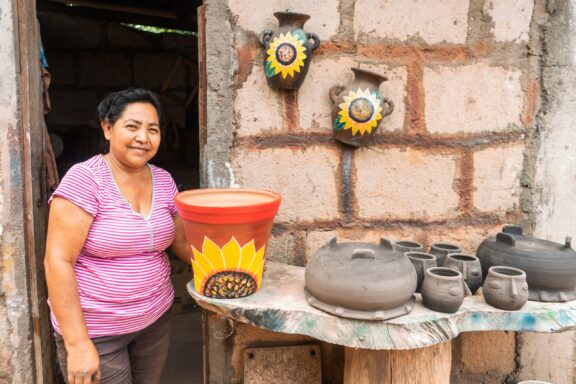
Native Spanish speakers: 6.51 million
With coastlines on the Pacific Ocean and the Caribbean Sea, the Republic of Nicaragua borders Spanish speaking countries that include Honduras and Costa Rica. The diversity of its recognized languages make it an ideal tropical destination, and they include English, Miskito, Rama, Sumo, Miskito Coast Creole, Garifuna, and Rama Cay Creole.
A national form of Spanish called Nicañol is the country’s official language. Like other Spanish speaking countries in the region, Nicañol emphasizes the second person singular pronoun, vos.
Known for its sweeping volcanoes, lakes, and landscapes, Nicaragua can be very safe for tourists. It also provides a low cost of living for expatriates.
16. Costa Rica

Native Spanish speakers: 5.13 million
The Republic of Costa Rica ranks among the top tourism nations with coastlines on the Pacific Ocean and the Caribbean Sea. The name literally translates from Spanish to English as “Rich Coast.” The Central American nation is situated between a pair of Spanish speaking countries — Panama and Nicaragua.
The government recognizes languages that include Mekatelyu, Bribri, Patois, while English, German, Italian, and Plautdietsch are also spoken. Costa Rican Spanish emphasizes the use of the second person and remains the official language.
One distinguishing factor of Costa Rican Spanish is the double-R accent adopted by its more than 5 million residents.
Costa Rica remains a preferred worldwide travel destination and ranks among the top 10 places for expatriates.
17. Paraguay
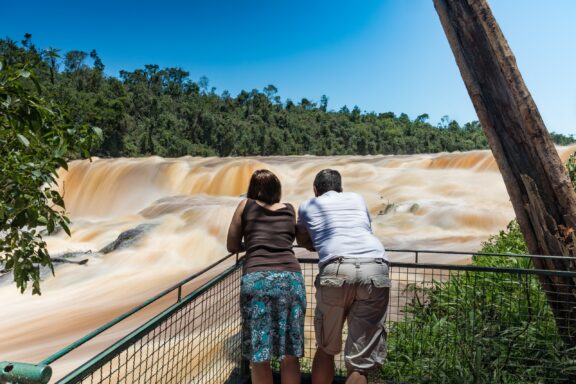
Native Spanish speakers: 5.01 million
Officially known as the Republic of Paraguay, the landlocked South American country speaks a national dialect called Paraguayan Spanish. With a population of more than 7 million people, Paraguay borders Spanish-speaking countries such as Bolivia, and Brazil to a lesser degree. The Paraguayan form possesses grammatical markers that align it with common dialects spoken in northern Spain.
Along with Paraguayan Spanish, Guarani is recognized as the co-official language and used by approximately half of the population. Paraguay is considered a safe, family-friendly place, with a low crime rate that continues to decline. It’s also recognized for warm and welcoming hospitality.
18. Panama
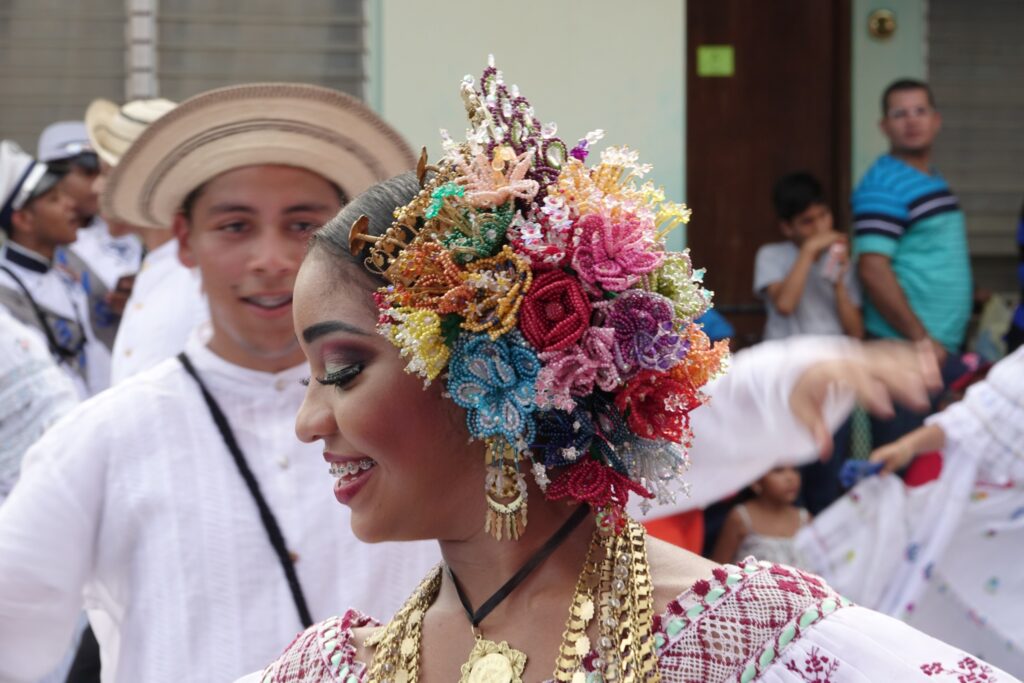
Native Spanish speakers: 4.03 million
The Republic of Panama enjoys coastlines along the Pacific Ocean and the Caribbean Sea and possesses the famous Panama Canal, linking the bodies of water. With Spanish speaking countries such as Costa Rica and Colombia to the north and south, respectively, Panama’s population of 4.3 million recognizes Spanish as its official language. Panamanian Spanish closely resembles dialects spoken across the Caribbean Islands and abutting nations.
People in the region adopted the language after Spanish rule was imposed during the early 1500s. Although Spanish remains the official language, indigenous people and immigrants add 14 others to the mix.
Panama offers a low cost of living, and ranks among the top 50 most peaceful countries. Its tropical landscapes and beaches attract numerous tourists.
19. Uruguay
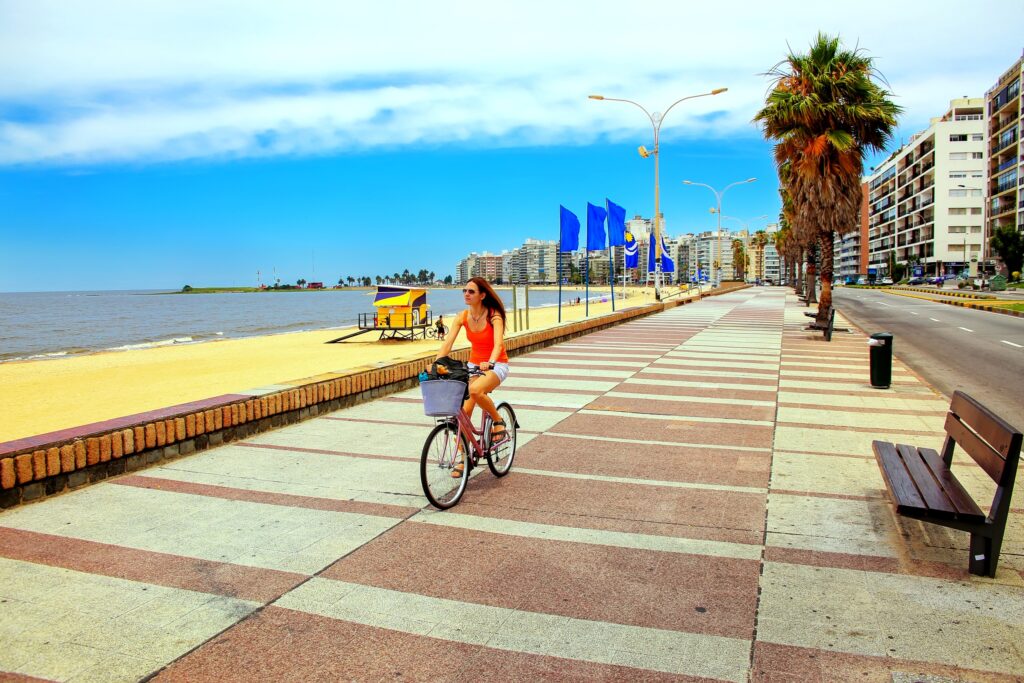
Native Spanish speakers: 3.43 million
Located on South America’s Atlantic Ocean coast, Uruguay may be the continent’s most underrated of its Spanish speaking countries. Of its population of 3.5 million, upwards of 2 million live in metropolitan areas. Montevideo, its largest city and capital, is positioned across the Rio de la Plata from the famed Buenos Aires. The remainder of the people reside largely in quiet rural and agricultural areas.
Consistently rated among the top nations for human rights, Uruguayan Spanish is its official language. The dialect and accent have been steadily influenced by growing Italian communities. Uruguay ranks among the safest Spanish speaking countries for tourists in South America.
20. Equatorial Guinea

Native Spanish speakers: 0.91 million
Located on the Atlantic Ocean coastline of Africa, the population of nearly 1.2 million was formerly known as a colony of Spanish Guinea. It is situated between Cameroon, the Republic of Congo, and Equatoguinean Spanish is spoken by upwards of 90 percent of the people as a first or second language. The Republic of Equatorial Guinea is the only Spanish speaking country on the continent.
The country has a history of falling under the rule of European nations such as Portugal, Britain, and Spain. Although petty crimes appear high, the African nation is considered relatively safe for tourists and the cost of living is lower than in the U.S.
Puerto Rico (Territory of the United States)

Native Spanish speakers: 3.16 million
What Makes Spanish Spoken in Puerto Rico Unique?
The Commonwealth of Puerto Rico is a U.S. territory located in the Greater Antilles between the Dominican Republic and the U.S. Virgin Islands. Unlike many other Spanish speaking countries, the island nation recognizes English as a co-official language, although less than 10 percent of its nearly 3.3 million people speak English fluently.
Puerto Rico was annexed from Spain to the U.S. as part of a treaty to end the Spanish-American War in 1899. Puerto Rican Spanish is a variant with roots in Canarian and Andalusian Spanish.
Countries with a Significant Spanish-speaking Population
Spanish is the fourth most spoken language in the world (after English, Mandarin Chinese, and Hindi).
How many Spanish speakers are there in the world?
543 million people in the world speak Spanish. Particularly in countries such as Mexico, Colombia, Argentina, Spain, and even the US, the number of native Spanish-speakers is remarkable.
Population of Native Spanish Speakers
As for native speakers, Spanish is the second-largest language (460 million native speakers) after Mandarin Chinese (918 million native speakers).
These are the top 10 countries with the most native Spanish speakers (2021 data, in millions):
- Mexico: 124.85
- Colombia: 50.64
- Argentina: 44.94
- Spain: 43.64
- United States: 41.76
- Venezuela: 32.1
- Peru: 28.71
- Chile: 18.87
- Ecuador: 15.48
- Guatemala: 13.4
Although not necessarily an official language, the following countries routinely provide services and educational information in Spanish.
- Andorra: Approximately 43 percent of this landlocked European country’s population of 77,000 speak Spanish.
- Belize: Located on the Caribbean Sea in Central America, more than half of its 419,000 residents speak Spanish. However, English remains the official language.
- Gibraltar: Although this country is considered a British territory, it is located on Spain’s southern coast. Nearly 82 percent of the territory speaks Spanish.
- United States: Nearly 20 percent of people in the United States speak Spanish as a first or second language. Although not federally recognized, English remains the de facto native language.
- Philippines: Spanish was recognized as the official language from 1565 through 1987 when it was downgraded to optional. Although reintroduced as an official language in 2012, less than 5 percent of the population speak it proficiently.
- Western Sahara: Considered a second language in the former Spanish colony, Arabic remains the most prevalent.
Spanish is also the third most popular language on the Internet, with an 7.9% share (after English and Chinese).
Spanish Language FAQs
What is the Creole Language?
Creole languages are typically rooted in Spanish and/or Portuguese. The Papiamento form of Creole is recognized as an official language in Aruba, Bonaire, Curaçao, Caribbean Netherlands, and the Philippines.
What is Judeo-Spanish?
Tracing its history to Medieval Spanish, it is still spoken by some Sephardi Jews, primarily in Israel. Also known as Ladino, its vocabulary has roots in Old Romance languages of the Iberian Peninsula, as well as Hebrew, Aramaic, and Arabic.